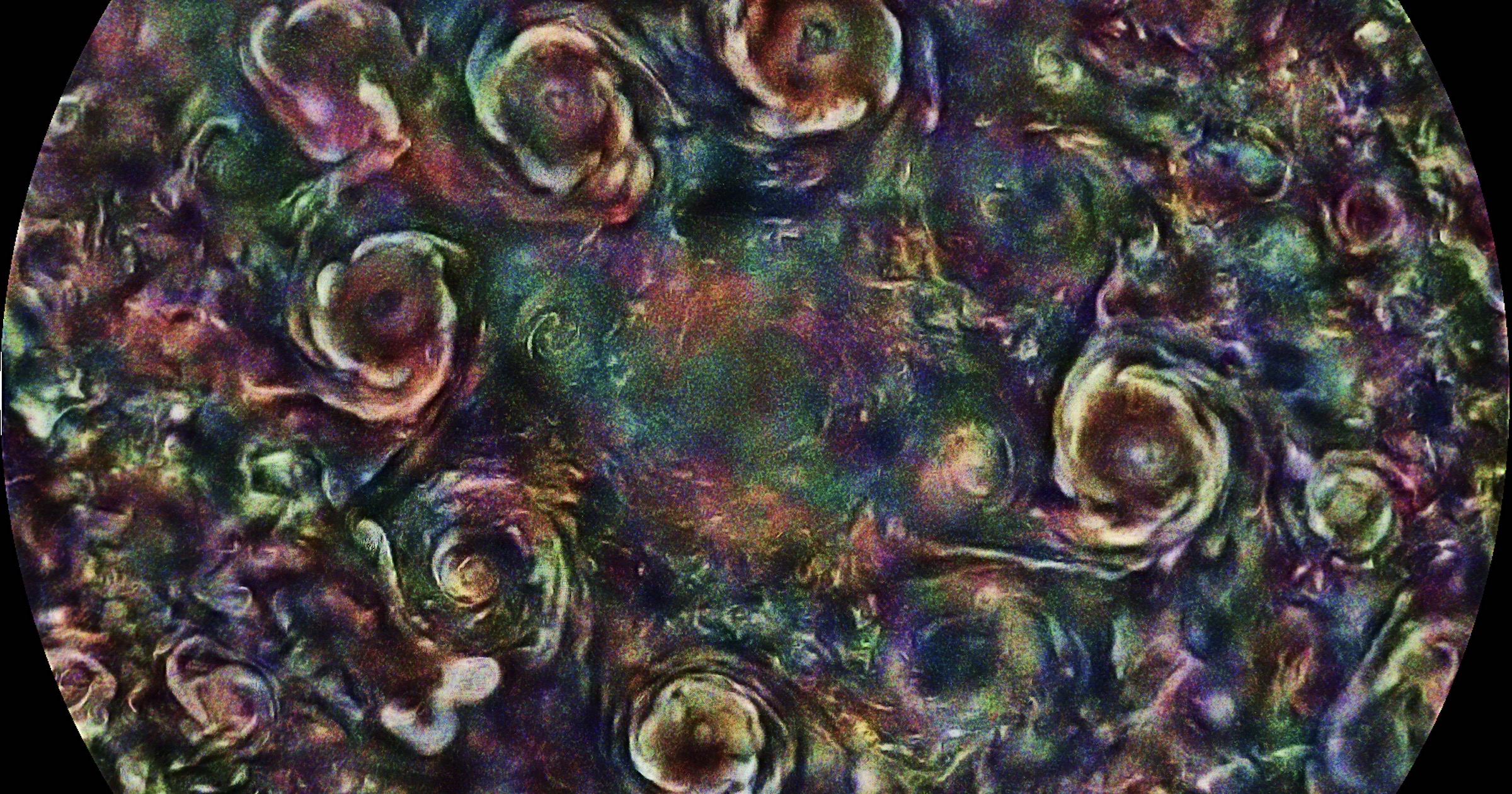 Intelligent Design
Intelligent Design
 Physics, Earth & Space
Physics, Earth & Space
Top Six Evidences for Intelligent Design

The ACLU speaks for much of the media and of academia when it says the theory of intelligent design “simply says that some things that seem very complex could not have happened based on natural causes. So where it sees complexity, it declares that it must have been created by a supernatural entity. This is not science.” Oh really? Is that all there is to it? Not exactly. Below is a modest attempt to provide a summary of the main scientific evidences for design in our world, for those who have been told that such evidence does not exist.
1. The Fine-Tuning of Conditions on Earth
It is well known, and well accepted in scientific circles, that the conditions on our planet are extremely fine-tuned for life: the Earth is just the right size, it is just the right distance from its sun, our sun is the right type of star, our atmosphere has many rare and lucky features — the list goes on and on. A few of these fine-tuned features of Earth are documented in Episode 4 of the Science Uprising series.
Of course, materialists (those who believe there is nothing more to life than matter in motion) have a plausible explanation for this: there are many planets in the universe but only a very few are suitable for life, and we are here because our Earth is one of these rare planets. At least it would be a plausible explanation if the materialists’ assumptions were plausible, that once you have a planet where conditions are just right there is a reasonable chance that life would spontaneously arise and intelligent beings would spontaneously evolve over time. That these assumptions are not plausible is shown in points 3 and 4 below.
2. The Fine-Tuning of the Physical Laws of Our Universe
It is also widely accepted, as also documented in the same Science Uprising episode, that not only is our Earth an ideal planet for life to thrive, but our whole universe is fine-tuned for life. The smallest changes in most of the basic constants of physics (the gravitational constant, Planck’s constant, the charge and mass of the electron, etc.) or in the initial conditions at the Big Bang, would have led to a universe where life, and therefore humans, could not have arisen. As Stephen Hawking wrote in A Brief History of Time (1988), “The remarkable fact is that the values of these numbers seem to have been very finely adjusted to make possible the development of life.”
How do materialists explain this? There must be many universes, with many different laws and constants and initial conditions, and we are here because our universe is one of those rare universes where the conditions are just right for us to be here. A. J. Leggett lists some of the fine-tuned properties of our universe in The Problems of Physics (1987), and concludes,
The list could be multiplied endlessly, and it is easy to draw the conclusion that for any kind of conscious beings to exist at all, the basic constants of Nature have to be exactly what they are, or at least extremely close to it. The anthropic principle then turns this statement around and says, in effect, that the reason the fundamental constants have the values that they do is because otherwise we would not be here to wonder about them.
Paul Davies, in Other Worlds (1980), wrote
If we believe there are countless other universes, either in space or time, or in superspace, there is no longer anything astounding about the enormous degree of cosmic organization that we observe. We have selected it by our very existence…. The many universes theory does provide an explanation for why many things around us are the way they are. Just as we can explain why we are living on a planet near a stable star by pointing out that only in such locations can life form, so we can perhaps explain many of the more general features of the universe by this anthropic selection process.
This time there is no evidence — there can never be any evidence — that there are other universes out there, with the same laws of physics but random values for the basic constants (or perhaps random laws of physics also?). So the explanation that our universe is just right because otherwise we would not be here to wonder about it is completely unscientific. It is interesting that those who for many years have ridiculed religious believers for imagining there is another universe, or reality, out there with better conditions awaiting us have now been reduced, by the evidence for fine-tuning, to inventing not one but “countless” other universes with different conditions.
By the way, a number of scientists, for example biochemist Michael Denton (see his 2016 book Fire-Maker and a related video), and physicist Robin Collins (see “The Fine-Tuning for Discoverability“) are now showing us that the conditions on Earth, and the laws of physics are not only fine-tuned for the survival of intelligent beings, they are also fine-tuned for the development of technology and for scientific discovery. Astronomer Guillermo Gonzalez and philosopher Jay Richards have shown that the Earth is not only well designed for human survival, it is also ideally situated for viewing the rest of the universe. These fine-tunings are interesting because they cannot be explained by asserting that “the conditions were just right because otherwise we would not be here to wonder about it.” We would still be here to wonder if the conditions on Earth, and the properties of fire, water, and metals, were not so fine-tuned to make possible the development of technology and scientific discovery. The only explanation for these fine-tunings is that they are gifts from our designer, to challenge and entertain us.
3. The Origin of Life
It is often claimed that science is close to understanding how the first simple life form arose though entirely natural processes. To see how baseless this claim is, you only have to realize that with all our advanced technology we are still not close to designing any type of self-replicating machine. That is still pure science fiction. So how can we imagine that such a machine could have arisen by pure chance, even given a universe with fine-tuned laws and a planet with fine-tuned conditions? When we add technology to such a machine, to move toward the goal of reproduction, we only move the goal posts, as now we have a more complicated machine to reproduce.
Maybe some day human engineers will design a self-replicating machine, like those we see everywhere in the living world, but it will not happen in my lifetime, and it will not be simple. It will certainly not show that such a machine could have arisen without design.
4. The Evolution of Humans
Materialists believe they already understand how the first living things evolved into intelligent beings, but they really do not have a clue. To appreciate this, you only have to realize that what they are forced to believe is that the four fundamental, unintelligent, forces of physics alone could have rearranged the basic particles of physics on Earth into computers, encyclopedias, airplanes, and the Internet, as my new video “Why Evolution Is Different” argues. The laws of physics are very cleverly designed, and probably can explain everything that has happened on other planets, but they are obviously not clever enough to explain, by themselves, the development of computers and cars and Apple iPhones.
This video also points out how similar the fossil record is to the development of human technology, with large gaps where major new features appeared, for the same reasons: gradual development of the new organs that gave rise to new orders, classes and phyla would require the development of new but not yet useful features. So Darwinism could not explain the development of these new features even if they did occur gradually — and they don’t.
5. The Origin of Human Consciousness
Below is a picture of three children in the 1950s. One of them is me, the other two are not. I saw the world from inside one of these children. I saw every picture that entered through his eyes, I heard every sound that entered through his ears, and when he fell on the sidewalk, I felt his pain.

How did I end up inside one of these children? This is a question that rarely seems to trouble evolutionists. They talk about human evolution as if they were outside observers and never seem to wonder how they got inside one of the animals they are studying. They consider that human brains are just complicated computers, and so to explain how we got here they just have to explain how those mechanical brains evolved. But even if they could explain how animals with mechanical brains evolved out of the primeval slime, that would leave the most important question — the one evolutionists never seem to even wonder about — still unsolved: How did I get inside one of those children?
6. The Beginning of Time
For thousands of years, nearly everyone in every corner of the world looked at plants and animals and said, these things are obviously designed, I wonder who designed them? Only the modern scientist, over-confident from so much success in unraveling other mysteries, says, these things sure look like they were designed, and the deeper we dig the more obvious the design is, but “Who designed the designer?” Nothing can possibly be beyond the reach of our science, so if we can’t understand where the designer came from, he can’t exist. (This over-confidence is understandable, but my video shows “Why Evolution Is Different” and much more difficult than other problems solved by science.)
For many years materialists avoided the parallel question of “Who designed matter and energy?” by saying they have always existed. But in the last century it was discovered that matter and energy and space and time did begin suddenly, with a “Big Bang,” about 14 billion years ago.
What came before the Big Bang? Even if to speak of “before” the beginning of time as we know it is not meaningful in a temporal sense, it is still meaningful in a causal sense, because out of nothing comes nothing: there has to be some “first cause.” Whether this first cause is intelligent or unintelligent, there is by definition no hope of ever explaining it in terms of “earlier” causes. Materialists can say that matter and energy — or whatever universe-generating mechanism they now prefer — needs no explanation because it is eternal, but we can equally well say our designer needs no explanation because he is eternal.
So why not assume a first cause that can explain what was caused: a universe with magnificently designed physical laws that are extremely fine-tuned for the magnificently designed plants and animals, and intelligent, conscious humans, that arose on our magnificently designed Earth?
